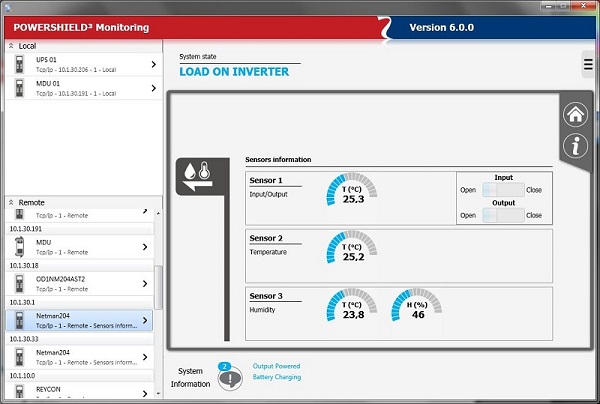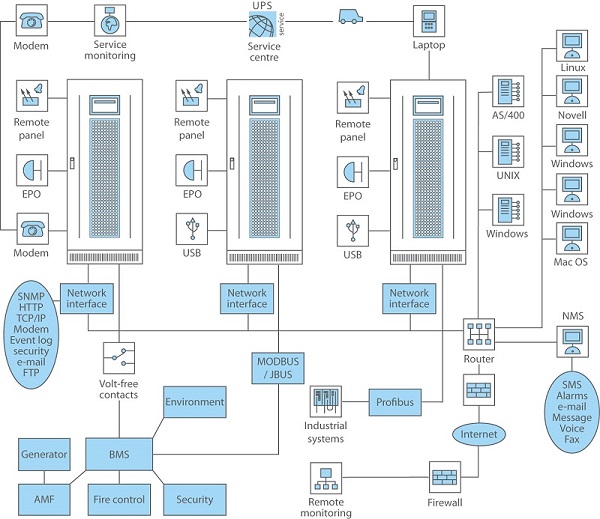24-7 remote monitoring uses Simple Network Management Protocols (SNMP) to enable the performance of UPS systems to be analysed by dedicated, expert personnel.
The UPS uses network communications cards and dedicated management software to transmit highly-secure SSL encrypted data to the network. This information can include load levels, input and output voltage, and battery voltage, as shown in the below image.

Most modern uninterruptible power supplies will also perform automated self-testing every 24 hours and alarm if a fault occurs. If a fault or failure is detected, the remote monitoring software triggers automated email or SMS notifications which are picked up by trained technical experts, who can carry out further diagnostics, arrange for engineers to fix the more serious incidents, or in the worst-case scenario initiate automatic shutdown procedures.
Remote UPS monitoring, such as our Riello Connect platform, is particularly useful for dealing with alarms outside of normal working hours, for unmanned sites, or for enterprise-wide networks with UPS spread across several locations.
SNMP-based remote monitoring also enables the historical tracking of UPS performance over time, which can be used to identify areas for improvement and optimise system operation.
This is because the network-connected computer’s storage and processing capacities are far greater than the UPS’s internal processor, which only allows engineers to diagnose potential problems based on recent events.
One of the key roles of UPS remote monitoring is to detect – and solve – any faults before they have the chance to develop into something more serious.
For example, a failed battery self-test would trigger an automated alarm, which under further investigation is caused by a weakening battery block. Promptly replacing this block would reduce the risk of the entire battery set failing.
The below image provides an example of a complex remote monitoring set-up within a comprehensive Power Continuity Plan.

What Are The Benefits Of UPS Remote Monitoring?
- Immediate fault detection: you know right away if there’s an issue with the UPS system, even if it happens at an unmanned location or out of hours.
- Remote diagnosis: interrogating the UPS increases the likelihood of an accurate initial fault assessment and the chances of a first-time fix.
- Problem prevention: UPS monitoring identifies many potential issues before they have chance to grow into something more serious. For example, a failed automated battery test would trigger an alarm, and upon further investigation, it turns out a weakening battery block is causing the problem. You could then replace this block and stop your entire battery set failing.
- Reduced service visits: remote monitoring reduces the number of onsite service visits required. While it also empowers staff to perform key duties remotely too.
- Enhanced performance: analysing historical performance data helps operators to optimise load management and identifies other areas for potential performance improvement.